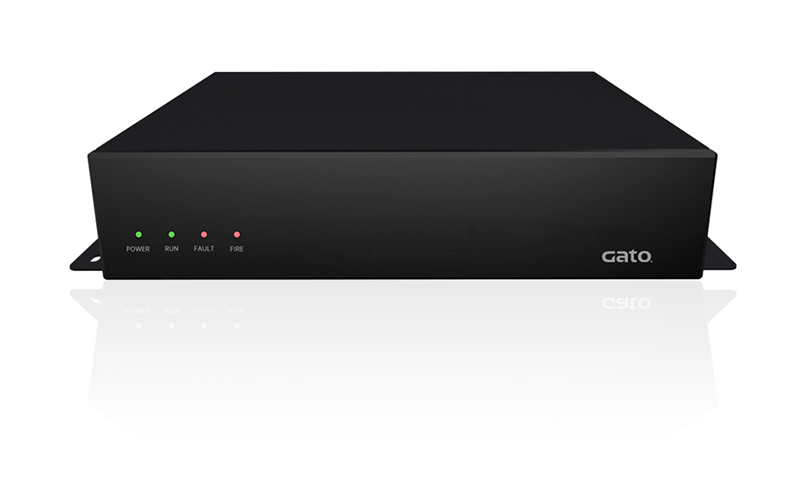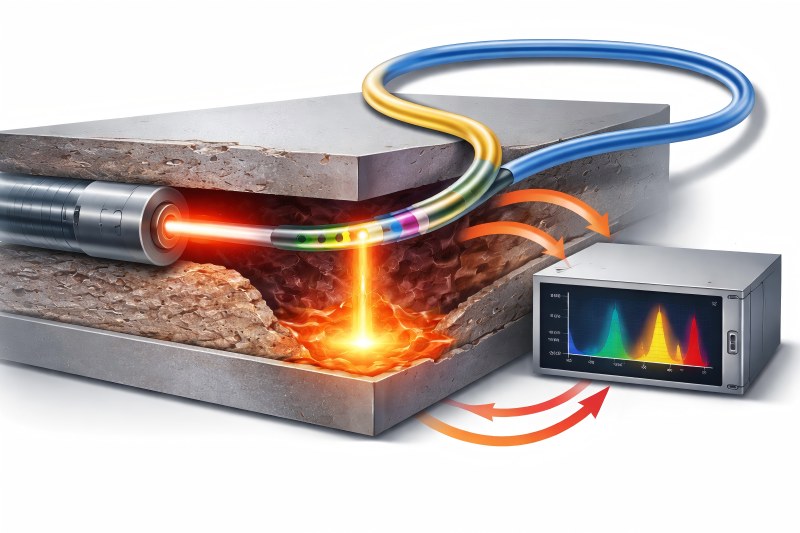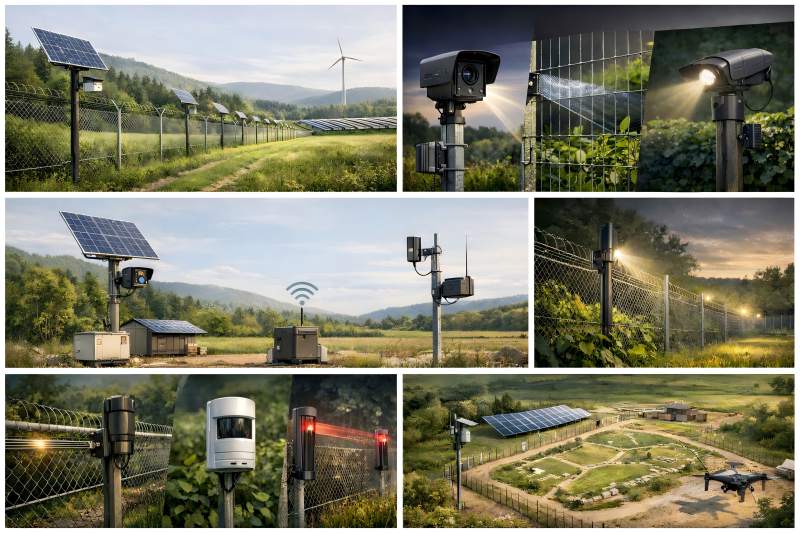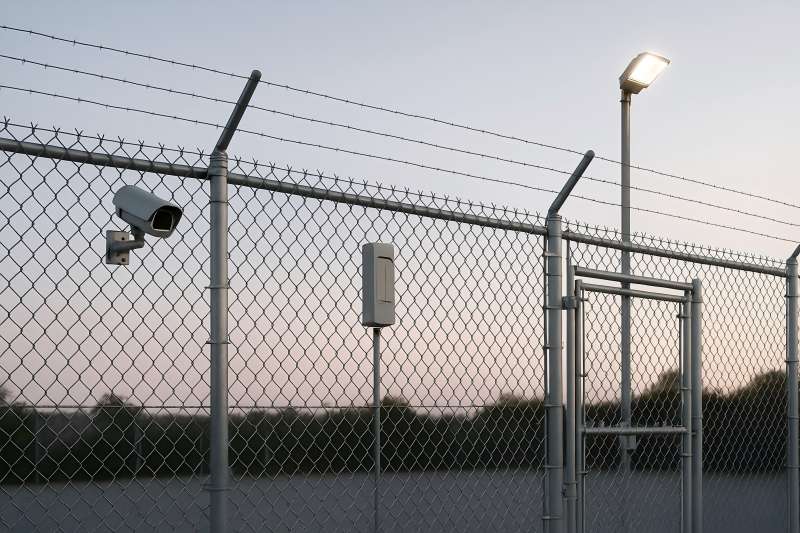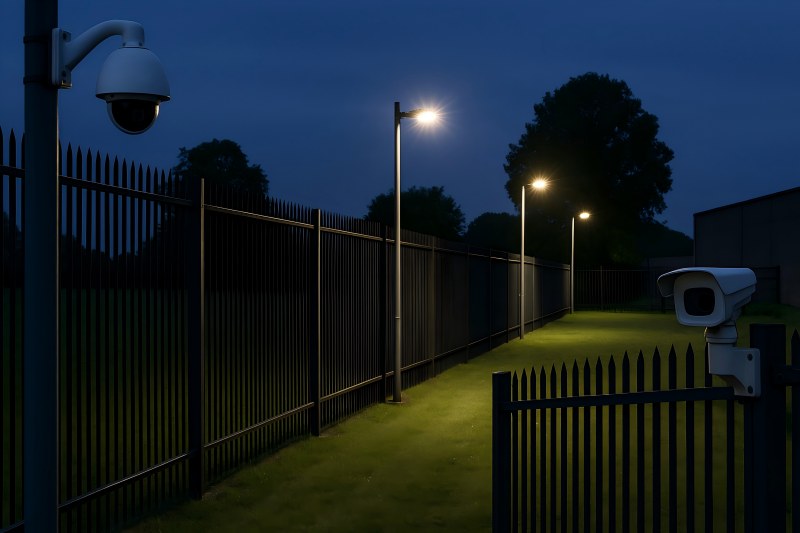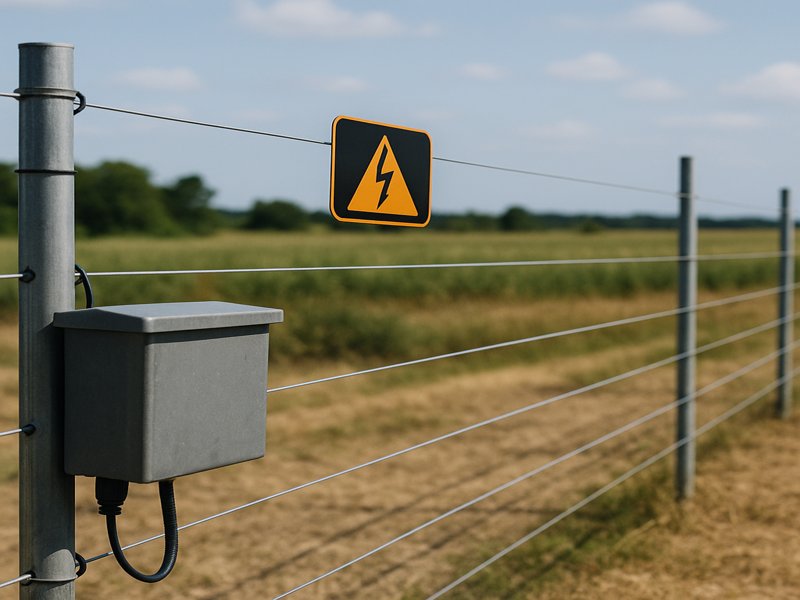Prison escapes pose serious threats to public safety and correctional integrity. To counter them, modern prisons need more than guard towers—they require electric fences and intrusion detection systems for layered, intelligent security. This article explores how these technologies create escape-proof perimeters.

The Challenge of Prison Escapes
The Human and Operational Risks
Prison escapes endanger lives—not only of the escapees and security personnel but also of innocent civilians. They lead to:
- Emergency lockdowns
- Manhunts and legal investigations
- Institutional reputation damage
- Massive resource expenditure
Most escapes occur due to physical breaches, routine negligence, or technological blind spots—all of which can be mitigated with layered security.
Traditional Weaknesses
Conventional perimeter systems—barbed wire, passive barriers, patrols—are:
- Vulnerable to cutting or climbing
- Poor at detecting breaches in real time
- Difficult to monitor continuously across large facilities
This is where electric fences and IDS integration change the game.
Electric Fences: First Line of Physical and Psychological Defense
How Electric Fencing Works in Correctional Settings
Electric fences are no longer just farm tools—they are advanced high-voltage pulse deterrent systems engineered for security. In prison applications, electric fencing is used to:
- Deliver non-lethal shocks that deter contact or climbing.
- Alert security staff the moment wires are touched, cut, or moved.
- Serve as a visual and psychological barrier warning of active defense.
Electric fences can be configured for inner perimeters, outer perimeters, or segregated zones within prison compounds.
Types of Electric Fences Used in Prisons
- Pulse Electric Fences: Emit timed high-voltage pulses (~7000–10,000V) that are non-lethal but powerful enough to deter.
- Tensioned Wire Systems: Provide both structural integrity and electrocution deterrent.
- Multi-Zone Systems: Divide the fence into independently monitored zones to precisely locate breach attempts.
Intrusion Detection: Turning the Fence into a Sensor
What is PIDS?
Perimeter Intrusion Detection Systems (PIDS) are sensor-based technologies that detect, analyze, and report any physical breach attempts across the fence line. Unlike passive systems, PIDS enables:
- Real-time breach alerts
- Pinpoint location detection
- False alarm filtration through AI or pattern analysis
Common PIDS Used in Prisons
- Vibration or Microphonic Cable Sensors: Detect tampering, cutting, or climbing.
- Fiber Optic Cable Systems: Use light disturbance to detect movement along the fence.
- Accelerometers: Detect sudden jolts or displacements on fences or walls.
- Ground Surveillance Radars: Monitor movement near the perimeter from a distance.
When combined with electric fences, these systems transform passive barriers into active detection zones.
Layered Security Architecture: Building an Escape-Proof Perimeter
A Multi-Zone Strategy
Creating an escape-proof prison means no single point of failure. A typical layered system includes:
- Outer Fence (electrified): First psychological and physical barrier.
- Sterile Zone: A no-access area between fences for detection clarity.
- Inner Fence (electrified): Traps intruders who breach the first line.
- Underground IDS: Detects tunneling or digging activities.
- Laser/Microwave Sensors: Cover the sterile zone.
- CCTV Integration: Provides visual confirmation and AI-powered tracking.
This architecture ensures redundancy, real-time tracking, and rapid incident response.
Command Center Integration
All perimeter data from electric fences and IDS is fed into a centralized security control platform, offering:
- Live mapping of breach locations
- Real-time alerts with time-stamped events
- Alarm prioritization and classification
- Integration with video analytics, access control, and patrol dispatch
Operators can monitor the entire perimeter from one dashboard, reducing reaction time to seconds.
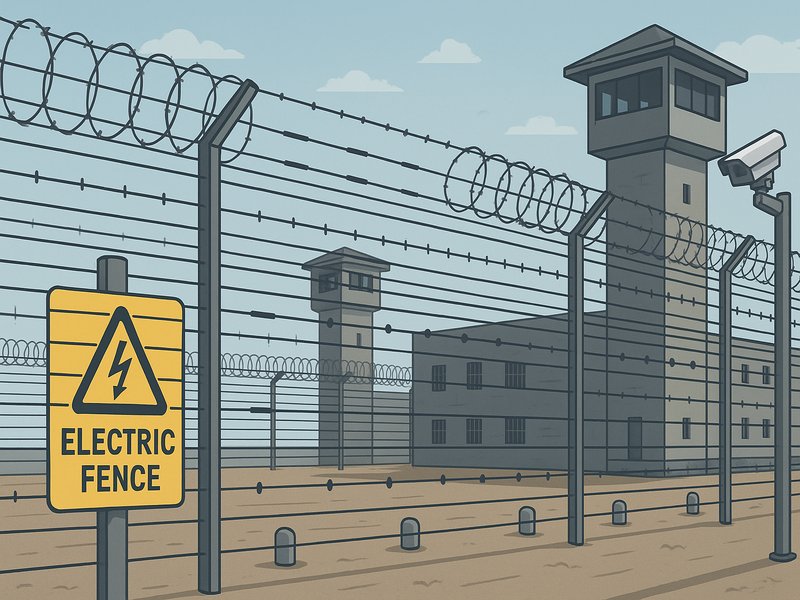
Advanced Electric Fencing Features for High-Security Prisons
Zone Customization
Each fence zone can be tailored with:
- Variable voltage output
- Climb detection algorithms
- Tamper alerts
- Disabling zones for maintenance without disrupting the entire system
Fail-Safe Operation
Electric fences for prisons must remain active during:
- Power failures (UPS and solar backup)
- Communication outages (fiber + wireless redundancy)
- Manual overrides (requires double authentication)
Maintenance Monitoring
Self-diagnostics alert security teams about:
- Wire cuts or shorts
- Insulator damage
- Voltage drop
- Energizer faults
Proactive alerts prevent downtime and avoid vulnerabilities.
Global Case Studies: Lessons in Effective Integration
South Africa’s Maximum Security Prisons
Some of the country’s high-risk prisons use dual electric fence zones combined with buried vibration detection and laser motion barriers, reporting nearly zero successful escapes since implementation.
Israeli Detention Centers
Israel’s security infrastructure employs smart electric fences, underground seismic sensors, and thermal imaging cameras, making their high-security centers virtually escape-proof—even under sabotage attempts.
Private U.S. Correctional Facilities
Modern American prisons integrate fiber optic intrusion detection, AI-enhanced camera systems, and electric fencing with centralized control rooms, reducing response time to breaches to under 10 seconds.
Advantages of Integrated Systems in Correctional Facilities
| Advantage | Description |
| Escape Deterrence | Prevents attempts by adding real-time electric and psychological barriers |
| Real-Time Alerts | Notifies security instantly of intrusions or tampering |
| Smart Decision-Making | AI filters events to reduce false positives |
| Efficient Response | Guides rapid team deployment and incident resolution |
| 24/7 Monitoring | Works in all conditions—rain, night, fog, etc. |
| Audit & Compliance Ready | Generates records for investigations and compliance |
Safety, Ethics, and Human Rights Compliance
Non-Lethal by Design
Integrated electric fencing systems follow international standards (e.g., IEC 60335-2-76) to ensure:
- Short-duration, low-amperage pulses
- Safety signage at regular intervals
- Emergency shut-off protocols
- Manual override access
These standards ensure inmate safety while maintaining security.
Ethical Security Implementation
Prison security systems must:
- Be transparent about usage
- Avoid excessive force or hidden electrification
- Respect visual privacy with smart zone masking
- Allow for third-party system audits
This fosters trust, prevents abuse, and aligns with human rights compliance mandates.
Planning and Deployment Considerations
Site Assessment
Security consultants begin with a full vulnerability and terrain assessment, factoring in:
- Facility layout
- Risk level (e.g., high-risk inmates)
- Surrounding topography
- Existing security infrastructure
System Design
Each system is uniquely configured with:
- Fence height and length
- Number of electric zones
- Type of IDS (fiber, seismic, infrared, etc.)
- Power and communication redundancy
Testing and Training
Before going live:
- Each zone is tested for detection sensitivity
- Control room staff undergo response simulations
- Maintenance teams are trained in diagnostics and safety
Ongoing drills ensure system readiness at all times.
The Future of Prison Perimeter Security
Predictive Analytics
Next-gen systems will predict escape attempts using:
- Historical data on behavior and incidents
- AI motion pattern recognition
- Geo-fencing for inmate location within prison zones
Drone-Based Monitoring
Autonomous drones may patrol perimeters, visually verifying fence alerts and providing real-time tracking of escapees.
Cybersecurity Integration
As electric fences become smarter, cyber protections will be essential to prevent:
- System hacks
- Alarm spoofing
- Tampering with surveillance integrations
Security vendors are now incorporating firewalls and encryption protocols into fence systems.
Creating an escape-proof prison is not about relying on a single barrier or guard—it’s about building a layered defense system where electric fences, intrusion detection, surveillance, and intelligent response work seamlessly together. With the integration of electric fencing and IDS technologies, modern prisons can close the security gaps that once allowed inmates to flee undetected.
These systems don’t just stop escapes—they prevent them from being attempted at all. By adopting these integrated solutions, correctional facilities reinforce public trust, protect lives, and meet the highest standards of safety, control, and accountability.

